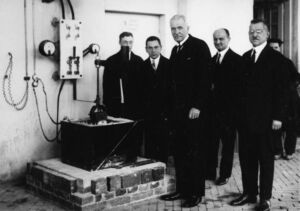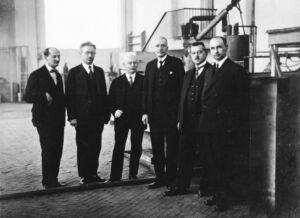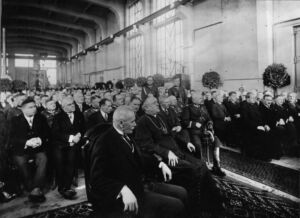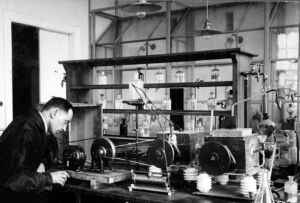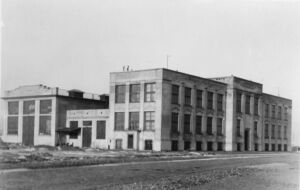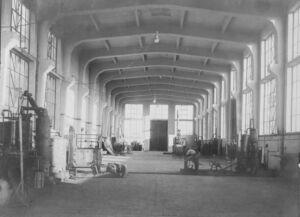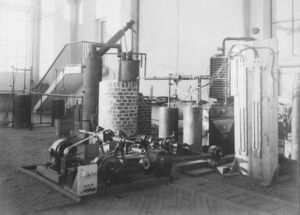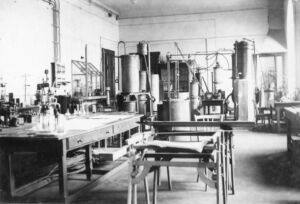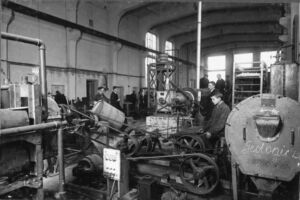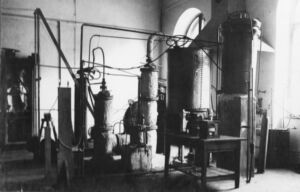History
Industrial Chemistry Institute has existed since 1916, when, on the initiative of Professor Ignacy Moscicki, Poland’s first chemical research institute (METAN company) was established in Lvov, transformed in 1922 into the Chemical Research Institute (ChIB). A few years later, in 1926, the Institute’s headquarters were moved to Warsaw.
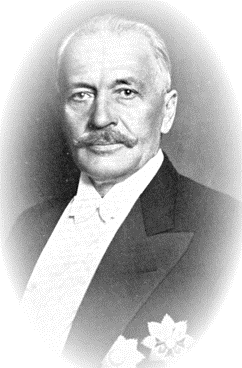
The task of the Chemical Research Institute was scientific activity aimed at building and developing the Polish chemical industry, with particular emphasis on the use of domestic raw materials – coal, clay and rock salt. The Institute’s most important achievement at the time was the development of a technology for obtaining synthetic rubber (KER), the commissioning of a plant for its production in Poland (as the third in the world after Germany and the Soviet Union) and the sale of licences, on the basis of which a number of plants were built abroad.
After the interruption caused by the Second World War, the scientific and research activities of the ChIB were reactivated as early as 1945 as part of the Institute of Chemical Industry, from which the Central Institute of Industrial Chemistry was established in 1948, subsequently transformed in 1951 into the Institute of General Chemistry – a departmental institute of the Ministry of Chemical Industry. In 1971, the Institute of Industrial Chemistry was formed from a merger of the Institute of General Chemistry and the Institute of Plastics. In 1990, it was named after Professor Ignacy Moscicki.
The achievements of the post-war years include around 2,000 patents, hundreds of original technological and apparatus developments applied on an industrial scale at home and abroad, and dozens of installations working on the basis of IChP licences.
Further implementations include Siltex®, a silicone impregnating agent for textiles (1984); the cyclohexanone plant in India with subsequent modernisations (1991-2011); the implementation of a polytrioxane manufacturing process at ZA Tarnów; and licences sold, inter alia, to China, Taiwan, Korea, the USA, the Czech Republic, the USA, the USA, the Netherlands, the USA, the Netherlands, the USA and the USA. Antigraf® – anti-graffiti emulsion (1999); glycol recovery technology – installation of a wastewater treatment plant in PKN Orlen Płock (2001); HTV silicone rubber technology (2002); development of chlo-FIS – an intermediate product for the anti-cancer drug Paklitaxel (2008); TDI production technology (the main raw material for polyurethane production) – a novel TDA phosgenation process, purchased by BASF (2012); PVC nanocomposites – industrial installation at Anwil SA (2015); development of modern technology for the production of hybrid flame retardants (used as flame retardant additives for polymeric plastics) (2015); technology for the recycling of zinc-carbon and alkaline batteries (2015); fuels from waste – technology for the processing of polymeric waste (2015).
From 1 April 2019. The Institute became part of the Łukasiewicz Research Network, adopting the name Łukasiewicz Research Network – Industrial Chemistry Institute.
On 1 June 2020, the following belonging to the Łukasiewicz Research Network: the Pharmaceutical Institute (Łukasiewicz – IF) and the Institute of Biotechnology and Antibiotics (Łukasiewicz – IBA) were incorporated into the Industrial Chemistry Institute.
